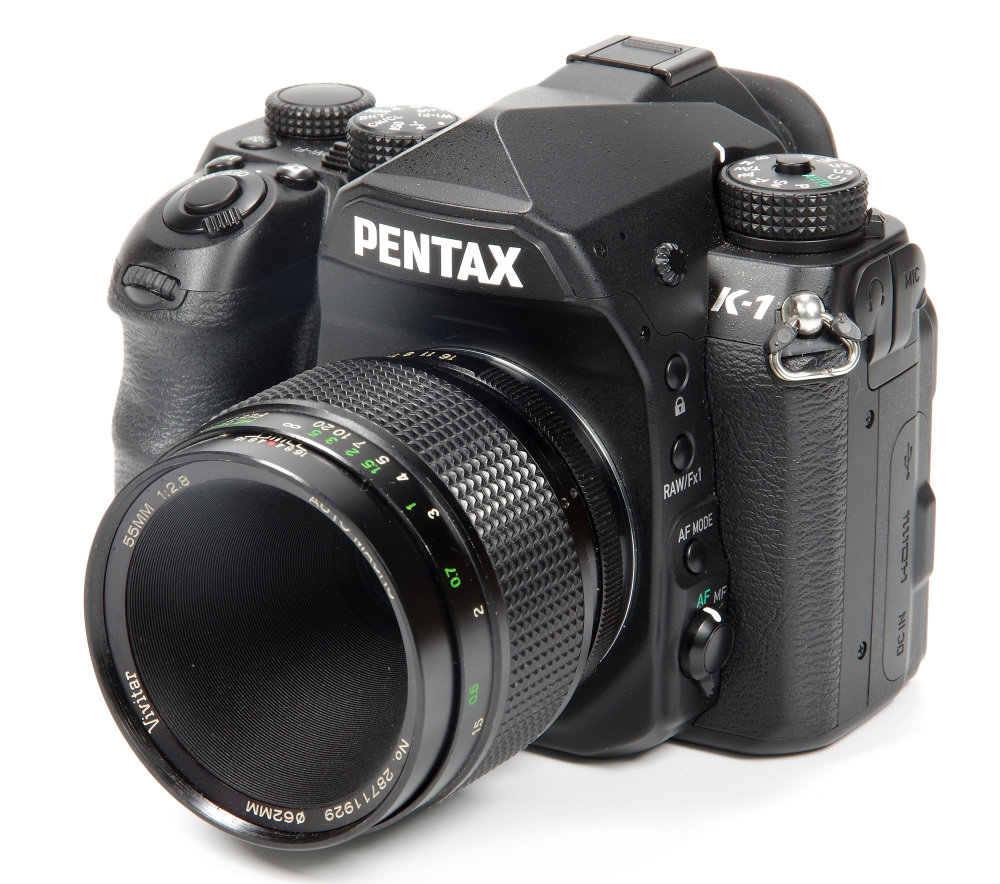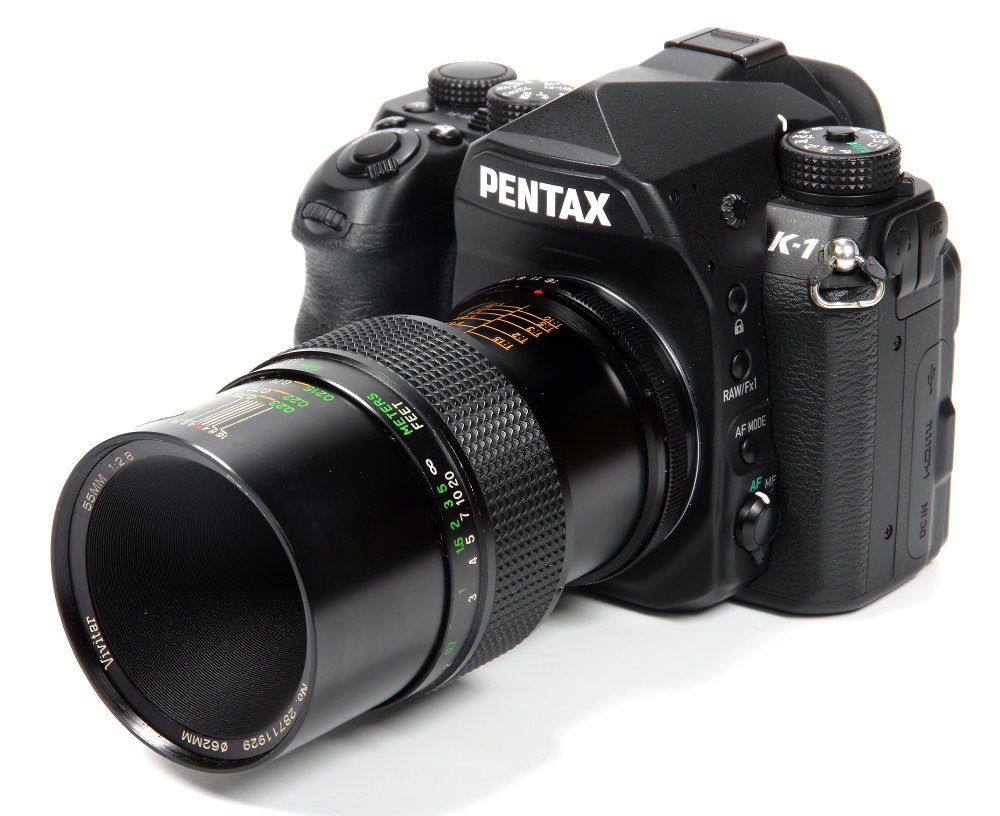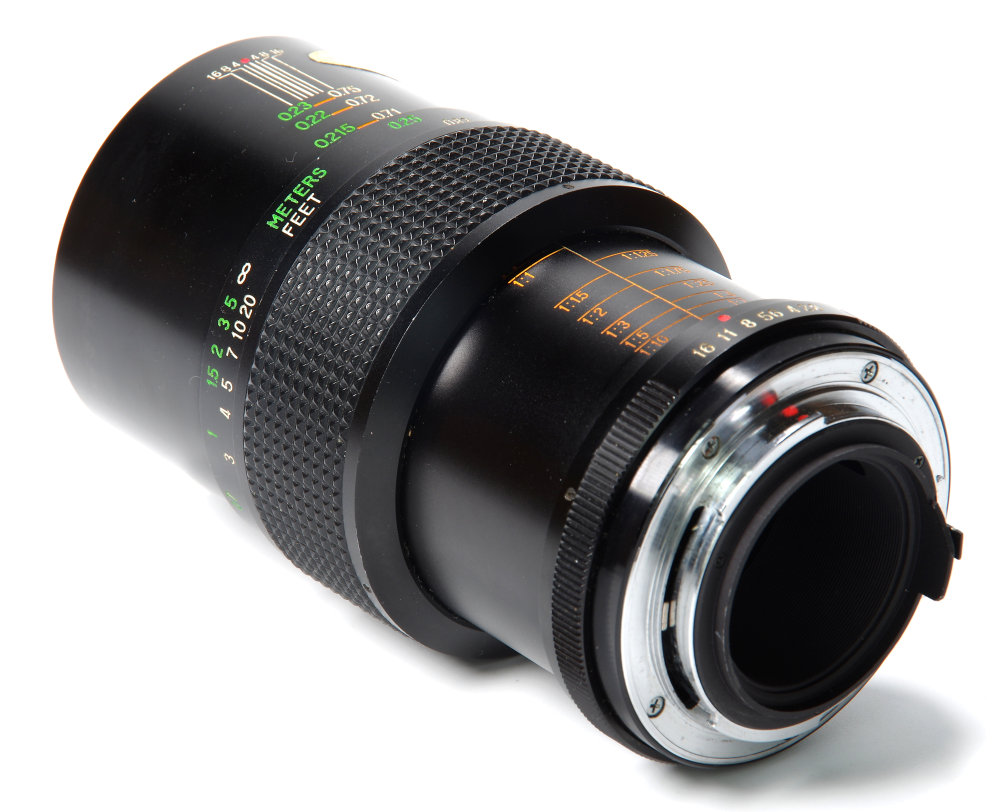Vivitar Auto Macro 55mm f/2.8 Vintage Review
Vivitar Auto Macro 55mm f/2.8 Handling and Features
A multicoated manual focus macro lens with continuous focusing down to life-size, or a magnification of 1x or 1:1, is an attractive proposition. AF is, of course, absent, but then again many macro subjects favour manual focusing even with an AF lens. So that may not be too much of a disadvantage.
There are no electronic contacts, so the K-1 immediately asks what the focal length is, the information being fed to the SR (Shake Reduction) system that is built into the camera. 50mm is the closest setting available. After that, on the K-1 manual exposure mode is set. To obtain the correct exposure, press the green button on the back of the camera. This briefly stops down the lens to whatever aperture is set, takes a meter reading and sets the shutter speed accordingly. Then take the shot and the lens will stop down correctly. Other camera bodies from other marques will behave differently. There were a very wide variety of mounts made for this lens, so with an appropriate adapter, it could well be possible to use it on whatever camera system we have.
Removing the metal push-on lens cap, we can see the front element is very deeply recessed. This really makes a lens hood redundant, which is good as the working distance can be quite close with macro subjects. There is a standard 62mm filter thread, but placing another piece of glass in a position exposed to potential reflections perhaps should be avoided unless necessary. It would negate the usefulness of the recessed front element.
The focusing ring turns fairly smoothly, not silky like some, but good enough. And it turns and turns...all the way down to that ultra-close 1:1 magnification. There is a depth of field scale, superseded at closer distances by magnification ratios, all being clearly marked.
Finally, the aperture ring has half stop détentes and operates perfectly well, again not super-smooth, but effective. Optically, we have 5 elements in four groups, a 6 bladed diaphragm and all in a metal package that weighs in at a modest 312g. This is a relatively simple, traditional optical design, but one capable of excellent results.
Using older manual focus lenses is actually quite straightforward, given the time to focus accurately. It's quite probable that focusing errors were much more common when this lens was new, but in this digital age where we can examine sharpness on our screens at enormous magnification then the various focusing aids can only be a good thing in our quest for sharp detail.
Vivitar was a product line of Ponder and Best in the USA and they commissioned lens designs and manufacture rather than making anything themselves, so a variety of lens manufacturers were involved. Komine is one of the better-known examples, but there are others and some very high-quality designs were produced. This macro lens was also sold under other names, and the Elicar V-HQ Macro 55mm f/2.8 and the Panagor PMC Macro 55mm f/2.8 are two examples.
Add your message
Please login here or if you've not registered, you can register here. Registering is safe, quick and free.
photodo Stats
428 MTF tests
74 in-depth photodo reviews
100+ users join each day
Help the lens community by reviewing or rating a lens today via our lens search
Latest Lens Reviews
- Chinon 28mm f/2.8 Vintage Lens Review
- Canon EF 70-200mm f/4L IS II USM Lens Review
- Samyang AF 85mm f/1.4 EF Review
- Sigma 70mm f/2.8 DG Macro Art Review
- Samyang AF 24mm f/2.8 FE Review
- Meike 50mm f/1.7 Review
- Tamron 70-210mm f/4 Di VC USD Review
- Lensbaby Burnside 35mm f/2.8 Review
- Asahi Super Takumar 50mm f/1.4 Review
- Asahi Super-Multi-Coated Takumar 135mm f/3.5 Review



